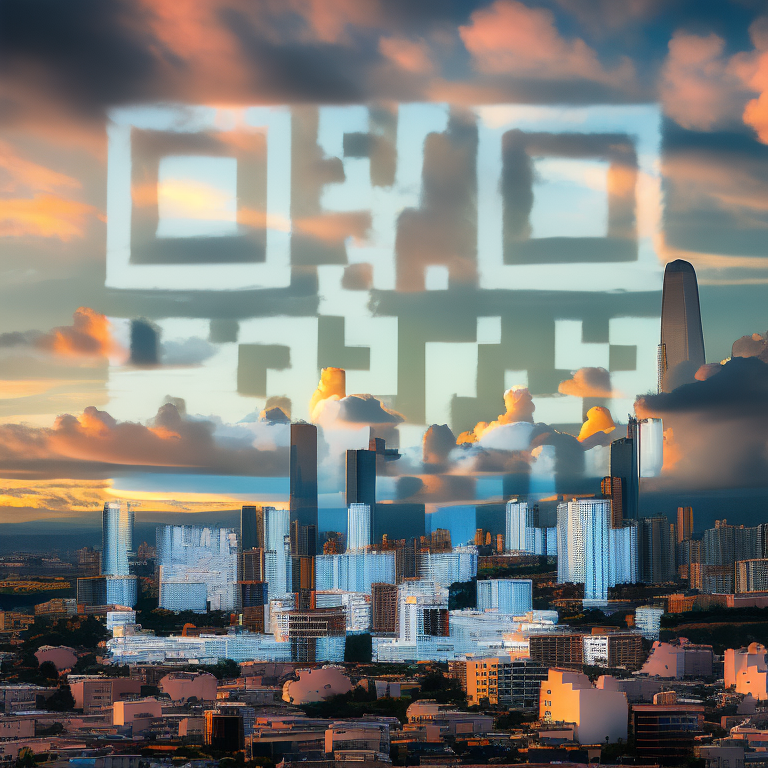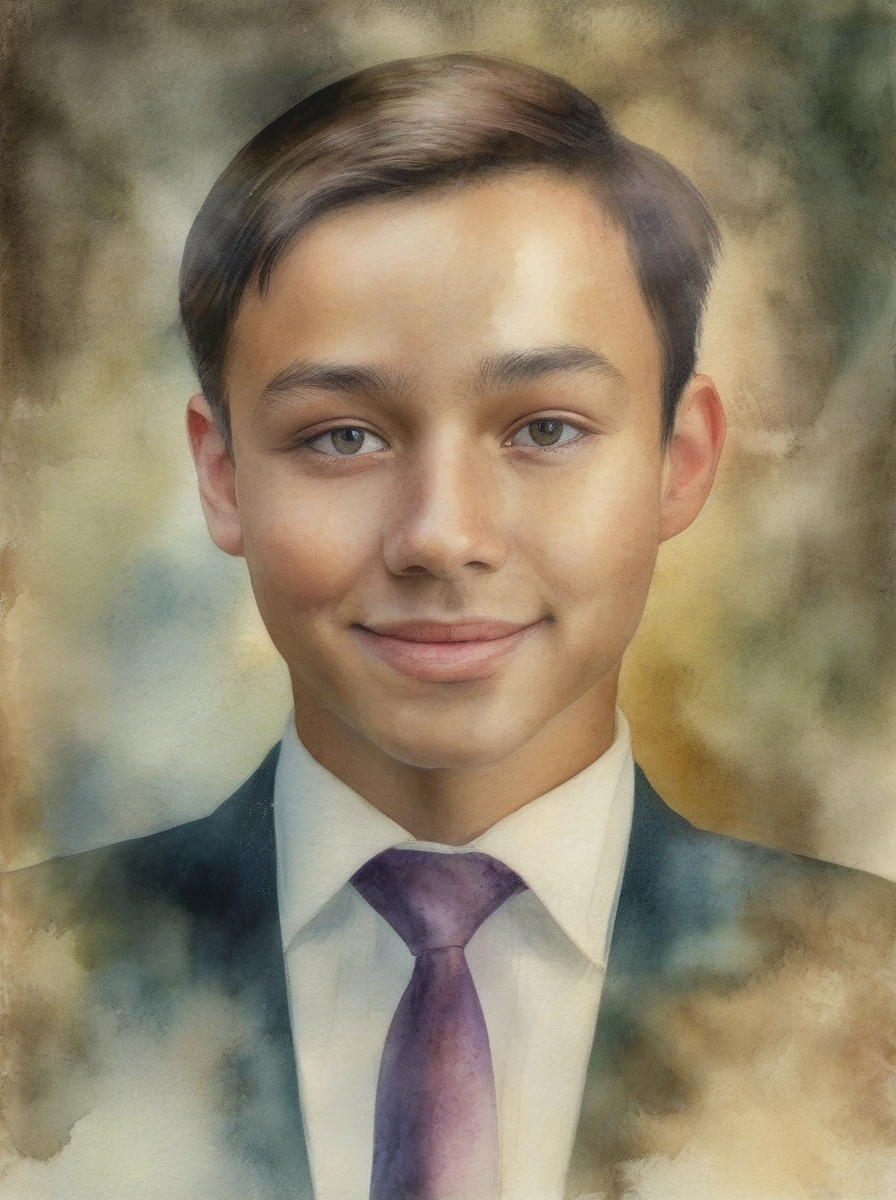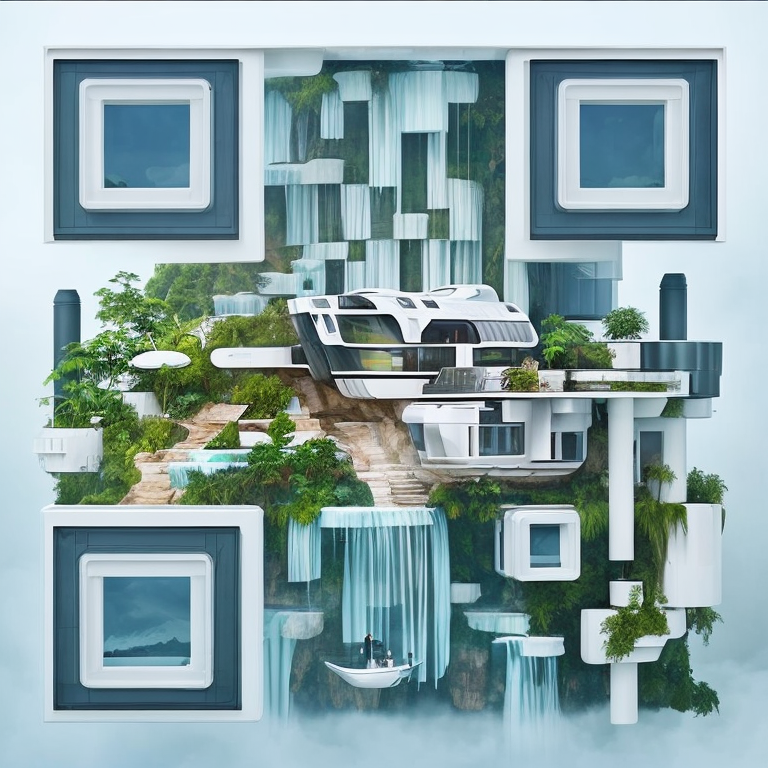qr_code_controlnet
Maintainer: zylim0702

373

| Property | Value |
|---|---|
| Run this model | Run on Replicate |
| API spec | View on Replicate |
| Github link | No Github link provided |
| Paper link | No paper link provided |
Create account to get full access
Model overview
The qr_code_controlnet model is a ControlNet-based AI tool developed by zylim0702 that simplifies QR code creation for various needs. This model leverages ControlNet's user-friendly neural interface, making QR code integration a breeze. Users can simply key in a URL, and the model will generate a corresponding QR code.
Similar AI models in this space include img2paint_controlnet by qr2ai, which transforms images and QR codes, and controlnet-v1-1-multi by zylim0702, a multi-purpose ControlNet model. Additionally, qr2ai offers the qr_code_ai_art_generator and advanced_ai_qr_code_art models for generating QR code-inspired art.
Model inputs and outputs
The qr_code_controlnet model takes a URL as input and generates a corresponding QR code image. The model also allows for various customization options, such as controlling the amount of noise, selecting a scheduler, and adjusting the guidance scale.
Inputs
- Url: The link URL for the QR code.
- Prompt: The prompt for the model.
- Num Outputs: The number of images to generate.
- Image Resolution: The resolution of the output image.
- Num Inference Steps: The number of steps to run during the denoising process.
- Guidance Scale: The scale for classifier-free guidance.
- Scheduler: The scheduler to use for the denoising process.
- Seed: The seed value for the random number generator.
- Eta: The amount of noise to add to the input data during the denoising process.
- Negative Prompt: The negative prompt to use during image generation.
- Guess Mode: A mode where the ControlNet encoder tries to recognize the content of the input image even without a prompt.
- Disable Safety Check: An option to disable the safety check, which should be used with caution.
- Qr Conditioning Scale: The conditioning scale for the QR ControlNet.
Outputs
- Output: An array of URIs representing the generated QR code images.
Capabilities
The qr_code_controlnet model can generate high-quality QR codes from a provided URL. This can be useful for a variety of applications, such as creating QR codes for product packaging, marketing materials, or digital signage. The model's flexibility allows users to customize the output to their specific needs, making it a versatile tool for QR code generation.
What can I use it for?
The qr_code_controlnet model can be used in a wide range of applications that require the generation of QR codes. For example, you could use it to create QR codes for product packaging, event tickets, or digital business cards. The model's ability to generate multiple QR codes at once could be particularly useful for businesses or organizations that need to create large quantities of QR codes.
Additionally, the model's integration with ControlNet technology could enable developers to incorporate QR code generation capabilities into their applications or services, making it easier for users to create and share QR codes on the fly.
Things to try
One interesting aspect of the qr_code_controlnet model is its "Guess Mode," which allows the ControlNet encoder to try to recognize the content of the input image even without a prompt. This could be a useful feature for applications where the input URL is not known in advance, or where the user wants to generate a QR code without providing a specific prompt.
Another intriguing possibility is to experiment with the model's various customization options, such as the guidance scale, scheduler, and noise level. By adjusting these parameters, users may be able to create QR codes with unique visual styles or characteristics that better suit their needs.
This summary was produced with help from an AI and may contain inaccuracies - check out the links to read the original source documents!
Related Models

img2paint_controlnet

1
The img2paint_controlnet model, created by qr2ai, is a powerful AI tool that allows you to transform your images or QR codes in unique and creative ways. This model builds upon similar AI models like qr_code_ai_art_generator, outline, ar, gfpgan, and instant-paint, all of which explore the intersection of AI, art, and creative expression. Model inputs and outputs The img2paint_controlnet model takes a variety of inputs, including an image or QR code, a prompt, a seed value for randomization, and various settings to control the output. The model then generates a transformed image that brings the input to life in a unique and visually stunning way. Inputs Image**: The input image or QR code that you want to transform. Prompt**: A text description that provides guidance on the desired output. Seed**: A random seed value that can be set to control the output. Condition Scale**: A parameter that adjusts the strength of the controlnet conditioning. Negative Prompt**: Text that describes elements you want to exclude from the output. Num Inference Steps**: The number of denoising steps to perform during the image generation process. Outputs Transformed Image**: The resulting image that combines your input with the AI's creative interpretation, based on the provided prompt and settings. Capabilities The img2paint_controlnet model is capable of producing highly detailed and visually striking images that blend the input image or QR code with a unique artistic style. The model can generate a wide range of effects, from fluid and organic transformations to intricate, fantastical illustrations. What can I use it for? The img2paint_controlnet model can be used for a variety of creative and artistic applications. You could use it to transform personal photos, business logos, or QR codes into one-of-a-kind artworks. These transformed images could be used for social media content, product packaging, or even as the basis for physical art pieces. The model's versatility and creative potential make it a valuable tool for anyone looking to add a touch of AI-powered magic to their visual projects. Things to try Experiment with different prompts to see how the model interprets your input in unique ways. Try combining the img2paint_controlnet model with other AI tools, such as gfpgan for face restoration or instant-paint for real-time collaboration, to create even more compelling and innovative visuals.
Updated Invalid Date

controlnet-v1-1-multi

1
controlnet-v1-1-multi is a CLIP-based image generation model developed by the Replicate AI creator zylim0702. It combines ControlNet 1.1 and SDXL (Stable Diffusion XL) for multi-purpose image generation tasks. This model allows users to generate images based on various control maps, including Canny edge detection, depth maps, and normal maps. It builds upon the capabilities of prior ControlNet and SDXL models, providing a flexible and powerful tool for creators. Model inputs and outputs The controlnet-v1-1-multi model takes a variety of inputs, including an input image, a prompt, and control maps. The input image can be used for image-to-image tasks, while the prompt defines the textual description of the desired output. The control maps, such as Canny edge detection, depth maps, and normal maps, provide additional guidance to the model during the image generation process. Inputs Image**: The input image to be used for image-to-image tasks. Prompt**: The textual description of the desired output image. Structure**: The type of control map to be used, such as Canny edge detection, depth maps, or normal maps. Number of samples**: The number of output images to generate. Ddim steps**: The number of denoising steps to be used during the image generation process. Strength**: The strength of the control map influence on the output image. Scale**: The scale factor for classifier-free guidance. Seed**: The random seed used for image generation. Eta**: The amount of noise added to the input data during the denoising diffusion process. A prompt**: Additional text to be appended to the main prompt. N prompt**: Negative prompt to be used for image generation. Low and high thresholds**: Thresholds for Canny edge detection. Image upscaler**: Option to enable image upscaling. Autogenerated prompt**: Option to automatically generate a prompt for the input image. Preprocessor resolution**: The resolution of the preprocessed input image. Outputs Generated images**: The output images generated by the model based on the provided inputs. Capabilities The controlnet-v1-1-multi model is capable of generating a wide range of images based on various control maps. It can produce detailed and realistic images by leveraging the power of ControlNet 1.1 and SDXL. The model's ability to accept different control maps, such as Canny edge detection, depth maps, and normal maps, allows for a high degree of control and flexibility in the image generation process. What can I use it for? The controlnet-v1-1-multi model can be used for a variety of creative and practical applications, such as: Concept art and illustration**: Generate detailed and imaginative images for use in various creative projects, such as game development, book illustrations, or product design. Product visualization**: Create photorealistic product renderings based on 3D models or sketches using the depth map and normal map control options. Architectural visualization**: Generate high-quality architectural visualizations and renderings using the Canny edge detection and depth map controls. Artistic expression**: Experiment with different control maps to create unique and expressive artworks that blend realism and abstract elements. Things to try With the controlnet-v1-1-multi model, you can explore a wide range of creative possibilities. Try using different control maps, such as Canny edge detection, depth maps, and normal maps, to see how they affect the output images. Experiment with various prompt combinations, including the use of the "A prompt" and "N prompt" options, to fine-tune the generated images. Additionally, consider enabling the image upscaler feature to enhance the resolution and quality of the output.
Updated Invalid Date

qr_code_ai_art_generator

2
The qr_code_ai_art_generator model, created by qr2ai, is a powerful tool that allows users to generate unique and artistic QR codes. This model is similar to other AI-powered creative tools like ar, which generates text-to-image prompts, and outline, which transforms sketches into lifelike images. Model inputs and outputs The qr_code_ai_art_generator model takes a variety of inputs, including a prompt to guide the QR code generation, the content the QR code should point to, and several parameters to control the output, such as the size, border, and background color. The model then generates one or more artistic QR code images based on these inputs. Inputs Prompt**: The prompt to guide QR code generation QR Code Content**: The website/content the QR code will point to Negative Prompt**: The negative prompt to guide image generation Num Inference Steps**: The number of diffusion steps Guidance Scale**: The scale for classifier-free guidance Image**: An input image (optional) Width**: The width of the output image Height**: The height of the output image Border**: The QR code border size Num Outputs**: The number of output images to generate Seed**: The seed for the random number generator QR Code Background**: The background color of the raw QR code Outputs Output**: One or more generated QR code images Capabilities The qr_code_ai_art_generator model can create unique and visually striking QR codes that go beyond the typical black-and-white square. By using a text prompt, the model can generate QR codes that incorporate artistic elements, patterns, or even abstract designs. This makes the QR codes more visually appealing and can help them stand out in various applications, such as marketing materials, product packaging, or social media posts. What can I use it for? The qr_code_ai_art_generator model can be used in a variety of creative and practical applications. For example, you could use it to generate custom QR codes for your business or personal website, product packaging, or event materials. The model's ability to incorporate artistic elements can also make the QR codes more engaging and memorable for users. Things to try One interesting thing to try with the qr_code_ai_art_generator model is to experiment with different prompts and parameters to see how they affect the generated QR codes. You could try using different keywords, varying the number of outputs, or adjusting the guidance scale to create a range of unique and visually interesting QR codes. Additionally, you could combine this model with other AI-powered tools, such as gfpgan for face restoration or cog-a1111-ui for anime-style image generation, to create even more unique and compelling QR code designs.
Updated Invalid Date

controlnet_2-1

14
controlnet_2-1 is an updated version of the ControlNet AI model, which was developed by Replicate contributor rossjillian. The controlnet_2-1 model builds upon the capabilities of the previous ControlNet 1.1 model, offering enhanced performance and additional features. Similar models like ControlNet-v1-1, controlnet-v1-1-multi, and controlnet-1.1-x-realistic-vision-v2.0 demonstrate the ongoing advancements in this field. Model inputs and outputs The controlnet_2-1 model takes a range of inputs, including an image, a prompt, a seed, and various control parameters like scale, steps, and threshold values. The model then generates an output image based on these inputs. Inputs Image**: The input image to be used as a reference or starting point for the generated output. Prompt**: The text prompt that describes the desired output image. Seed**: A numerical value used to initialize the random number generator, allowing for reproducible results. Scale**: The strength of the classifier-free guidance, which controls the balance between the prompt and the input image. Steps**: The number of denoising steps performed during the image generation process. A Prompt**: Additional text to be appended to the main prompt. N Prompt**: A negative prompt that specifies features to be avoided in the generated image. Structure**: The structure or composition of the input image to be used as a control signal. Number of Samples**: The number of output images to be generated. Low Threshold**: The lower threshold for edge detection when using the Canny control signal. High Threshold**: The upper threshold for edge detection when using the Canny control signal. Image Resolution**: The resolution of the output image. Outputs The generated image(s) based on the provided inputs. Capabilities The controlnet_2-1 model is capable of generating high-quality images that adhere to the provided prompts and control signals. By incorporating additional control signals, such as structured information or edge detection, the model can produce more accurate and consistent outputs that align with the user's intent. What can I use it for? The controlnet_2-1 model can be a valuable tool for a wide range of applications, including creative content creation, visual design, and image editing. With its ability to generate images based on specific prompts and control signals, the model can be used to create custom illustrations, concept art, and product visualizations. Things to try Experiment with different combinations of input parameters, such as varying the prompt, seed, scale, and control signals, to see how they affect the generated output. Additionally, try using the model to refine or enhance existing images by providing them as the input and adjusting the other parameters accordingly.
Updated Invalid Date